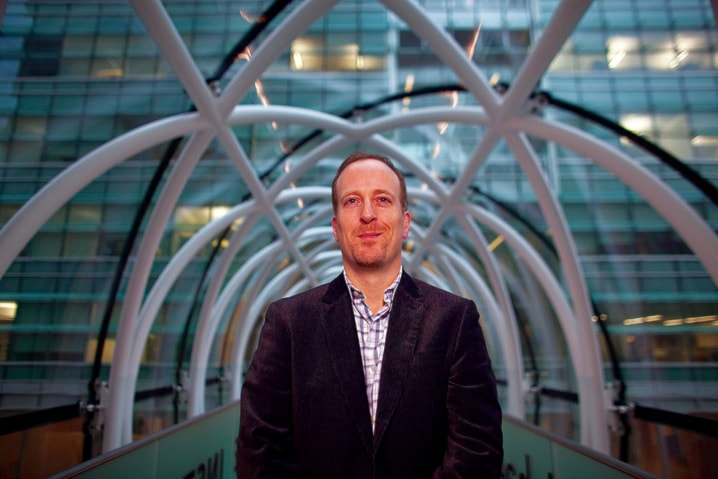TORONTO — It was an ordinary everyday manoeuvre in 2005 that put Tammy Milgrom on track for one back surgery after another. She bent down to do laundry, she sneezed, and her back went out. The damage was so severe that her bladder stopped working, and she was taken in for immediate surgery.
Repairs to her herniated disc lasted for nine or 10 months.
“Then in 2007, the same disc came out a little bit more, and so they ended up taking me back into surgery,” said Milgrom, 27, who lives in Thornhill, on the northern edge of Toronto.
“After the second one, again, I felt good. And then I started getting really bad pains down my right leg, and again pain in the back, and it was just hard to move around ... towards the end it was unbearable. I was almost unable to walk.”
At that point, she was referred to Dr. Howard Ginsberg, a neurosurgeon at St. Michael’s Hospital who had scoped out a new high-tech piece of equipment in Germany and introduced it to Canada after a generous donor came on board.
The Ziehm 3D intraoperative scanner, worth roughly $500,000, is akin to having a GPS for spinal surgery, so that surgeons can place screws inside the body without opening up the back and exposing the spine.
“It’s a special type of X-ray machine that works in concert with our navigation computer, so it basically does a CT scan in the operating room and then sends that CT scan directly to the navigation machine which allows us to do the surgery,” Ginsberg said on a recent December afternoon as he showed off the equipment temporarily parked in a hospital hallway outside the operating area.
Ginsberg, who is also trained as an engineer (and has a total of 17 years of post-secondary education), heard about the machine from a sales representative who sells screws and other medical equipment used for spinal surgery. Intrigued, he went to Nuremberg to visit the factory where it’s produced so that he could meet the engineers and learn more about it.
He also watched a surgeon performing an operation using the X-ray imaging technology in Freiberg.
The mobile technology provides high-definition pictures through a computer program that spins the equipment in a specific arc around the patient taking multiple X-rays and turning them into a 3D scan.
“Our tools have tracking devices on them, and the machine can track where the device is, so when you talk about putting a needle into the spine, I stick the needle in, a virtual image of the needle comes up on the screen, and there’s a virtual spine.
“So I see the needle going in and I don’t have to look at the patient. I look at the computer screen,” Ginsberg said.
“And so it’s like virtual surgery, but you’re actually cutting people.”
Milgrom had a five-level spinal fusion, which is a big operation, Ginsberg said.
Ordinarily a person would be in the hospital for weeks, and would take days to get up and start walking around.
“She literally got up out of bed the morning after her surgery. For that extensive an operation it’s pretty remarkable,” Ginsberg said.
Milgrom, who helps manage a family-owned restaurant, said the surgery definitely got her moving again.
“When I got home, I was out every day walking, obviously doing things a lot slower and a lot more careful than what I would normally do. But the healing was very good ... I’m able to live my normal life again, doing activities.
“Just in terms of working I’m able to function 100 per cent.”
Ginsberg, too, is pleased with both the technology and outcomes.
“I’m an engineer who does surgery, not a surgeon who is also an engineer. So I look at it as a problem, think there must be a technically better way, and this is just a technically better way.”
